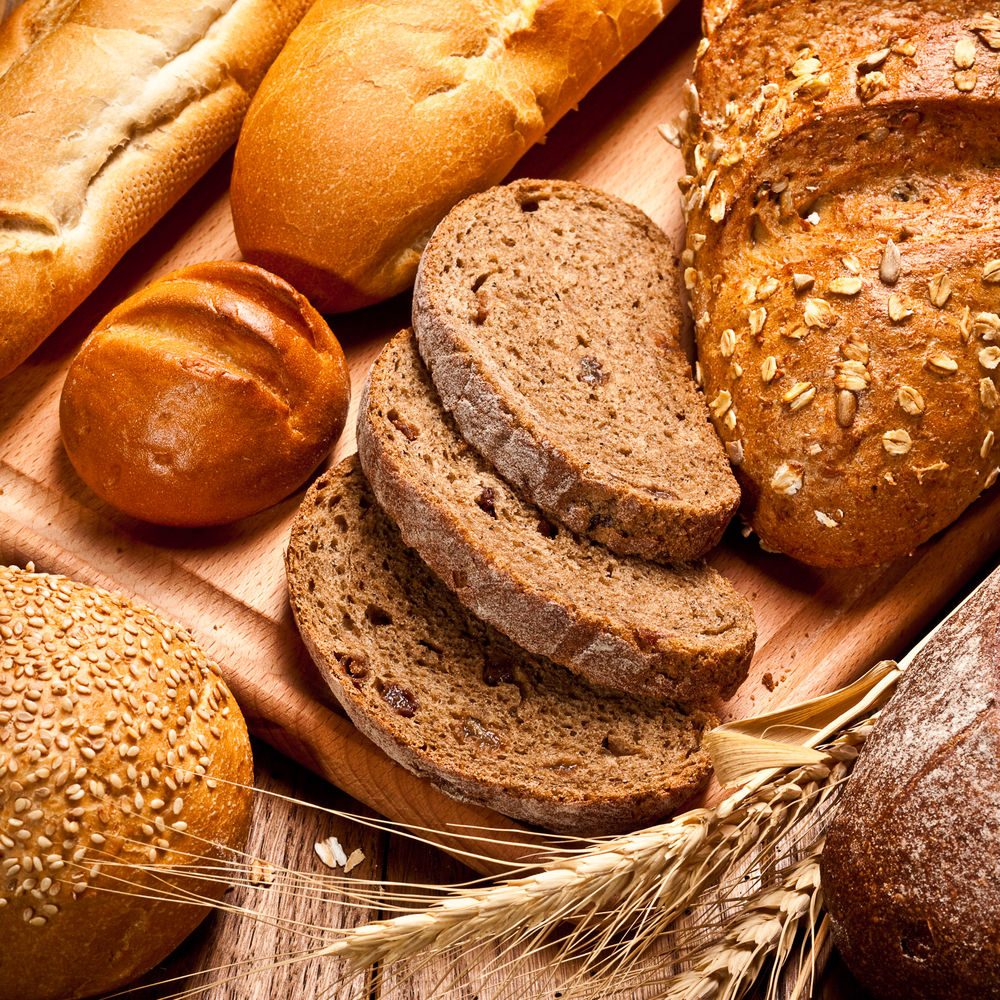

A new study tells us that in addition to its known contribution to weight gain and obesity, white bread, bagels and white rice also contribute to a 49% increase in lung cancer!
This recent study at the University of Texas showed that a diet with a higher glycemic index (GI) resulted in a significantly higher rate of lung cancer, especially in those who never smoked and those with squamous cell carcinoma (SCC). Glycemic index is defined by the rate at which blood sugar levels are raised after consuming a given food. Foods with high levels of refined sugars raise blood sugar levels significantly and quickly, while those high in fiber and low in sugar have a lower glycemic index. One reason why fruit is healthier than candy is that the fiber slows down the digestive process, slowing and lowering the blood sugar levels after consumption.
Whole Wheat
Highly processed white flour and rice made from wheat is what is causing the high glycemic index – the fast conversion of carbohydrates to blood sugar makes white flour and rice almost as bad as candy! One solution is to turn to whole wheat as a replacement for breads made from refined, white flour. When choosing bread, don’t rely on the labels that say “Whole Wheat Bread.” Instead, check the ingredients. If the first ingredient is “wheat flour” or “unbleached enriched flour,” then it is still highly processed flour with a high glycemic index. Look for labels with the first ingredient listed as “100% whole wheat” or “100% whole grain.”
Avoid Blood Sugar Spikes with These Healthy Alternatives
Another great way to reduce your glycemic index is to replace white bread and rice with breads and pastas not made from wheat. Many people are already doing this in order to avoid gluten, a protein in wheat products that has a negative impact on digestion. To avoid the high blood sugar that comes from eating white bread and rice, try some breads and pastas made from these alternatives:
- Brown Rice – Brown rice contains a range of B-vitamins, iron and is high in fiber. When brown rice is produced, the hull (shell) is removed, leaving the bran and most of the germ layer to add nutrition and fiber to your meal. This hull is removed from white rice, taking most of the nutritional value and fiber with it and leaving behind the carbohydrate.
- Flaxseed – High in omega-3 fatty acids, flaxseed is a healthy alternative to wheat. Flaxseed is also high in fiber and has been shown to protect against several types of cancer.
- Quinoa – A grain that offers anti-inflammatory properties, and is a source of omega-3s, folate and zinc – quinoa is also an excellent source of fiber. Quinoa can be eaten on its own as a replacement for rice or ground into a flour to replace wheat.
- Buckwheat – Containing high levels of zinc, copper and manganese, buckwheat also offers zinc, copper and potassium along with protein and a high fiber content.
- Amaranth – Rich in amino acids, especially lysine, amaranth is an excellent grain that can be used as a replacement for rice or ground into a flour. Amaranth is also high in calcium, iron and magnesium, as well as natural fiber.
- Rye – A grass similar to wheat and barley, rye offers many nutritional benefits including manganese, copper, magnesium, phosphorous, B-complex vitamins, and dietary fiber.
It is easier than ever to find healthy alternatives to try – so experiment with many of these whole grains in breads, pastas and side dishes. As you can see, there are many healthy alternatives to processed white flour and rice, and they even taste much better than their highly processed alternatives!




